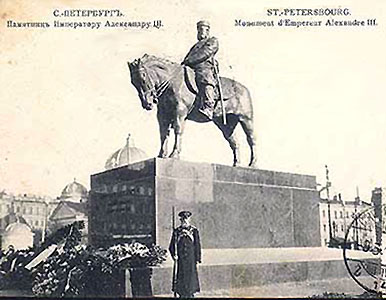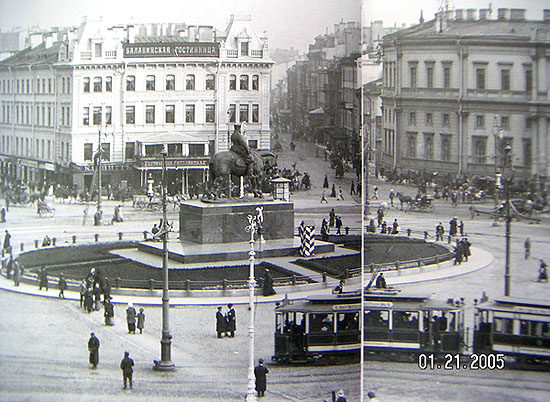Aleksandr Aleksandrovich III Romanov (Алекса́ндр III Алекса́ндрович Рома́нов, 10 March 1845 - 1 November 1894, tsar from 14 March 1881 to 1 November 1894).
Some interesting facts about Alexander III.
1. Originally, he was second in line to inherit the throne. His older brother Nikolai Aleksandrovich (8 September 1843 - 12 April 1865) was groomed to inherit the throne. Nikolai had a very enlightened upbringing/training and was betrothed to Princess Dagmar of Denmark (26 November 1847 - 13 October 1928), but Nikolai died very young because of tuberculosis.
2. The future Alexander III, himself, did not receive much in the line of training (his brother got all of the attention) beyond some rather rudimentary secondary instruction, some language ability and a bit of military drill. He did study some under Konstantin Pobedonostsev, who gave Alexander III some very conservative ideas. After his brother died, and Alexander was heir, yet he still played no real role in practical affairs of state in the sixteen years that he had to prepare to rule.
3. Now this is strange. On his deathbed, Nikolai, the older brother, asked that Alexander marry Nikolai's fiancé, Princess Dagmar. That marriage occurred on 9 November 1866, and it turned out to be a very happy marriage.
4. Not a good start (or end) for a reign. On 1 March 1881, Alexander II was traveling in a carriage in St. Petersburg with a Cossack, coach-driver and another six Cossacks following behind. An attempt to blow up the tsar missed, but the tsar got out of his carriage to check the condition of the injured men in the escort. While he was standing there, another terrorist, Ignatii Grinevitski, threw a bomb that exploded at the feet of the tsar. The tsar's legs were literally torn apart. Bleeding profusely, he was taken to the Winter Palace where his wife/mistress and his son (the soon to be Alexander III) stayed with him until he died around 3:30 pm.
5. In October 1888 the imperial train derailed while the tsar and his family were in the dining car. There were no serious injuries, but in the wreckage Alexander III lifted the roof of the crushed railway car so that his family could escape. Unbeknown to anyone at the time, the tsar had bruised his kidney; an injury that eventually lead to his death six years later.
The Alexander III Monument, unveiled in 1909, has led a somewhat checkered life in St. Petersburg. Read the excellent description of the monument's history.
The statue stood on what used to be called Znamenskaia Ploschad (Square), which was renamed Vosstaniia Ploschad, opposite Nikolayevskii Station, which was later renamed Moskovskii station...On its pedestal by order of Nikolai II, the following words were inscribed: Loving son to the beloved father. It caused much controversy, as it was viewed as some kind of satirical caricature. The Duma wanted it to be destroyed, however the artist Repin liked what he saw, and so the statue remained.
accessed source: hydrogen.pallasweb.com/cgi-bin/yabb/YaBB.cgi?board=history;action=display;num=1106082354
"In 1937 it was removed from Ploshchad Vosstaniia and placed in an interior court yard of the Russian museum where it was ostensibly separated from the city. According to popular folklore of the day, the monument became 'the prisoner of the Russian museum'."
"At that time in Leningrad there was a popular belief that the well-being, honor and merit of the city were guarded by the three horsemen: the Peter the Great monument on Senatskaia Ploshchad, the Nicholas I monument on Isaakievskaya Ploshchad and the Alexander III monument on Ploshchad Vosstaniyi. The fact that one of these guardians of the city was removed from its historical home in 1937 was seen as a sign of imminent misfortune."
The monument is now located still in the courtyard of the Russian Museum in St. Petersburg.
Another current photo is at petersburgcity.com.

Old image of the monument, giving you some idea of it's size.

Znamenskaia Square (circa 1910), with the Alexander III monument in the center.